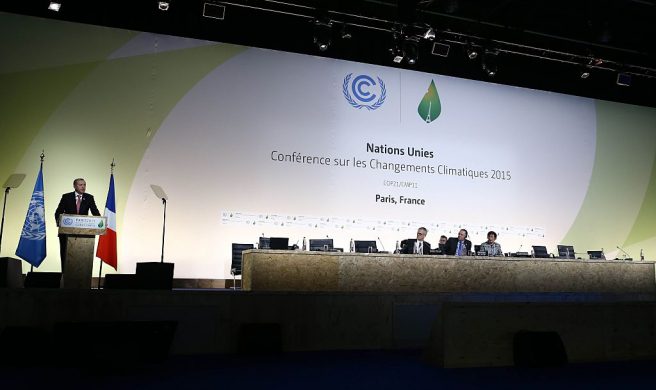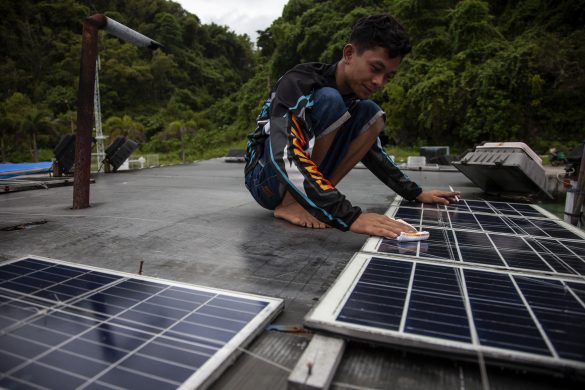GENEVA, 2 February, 2018 (UNOCHA): Mayon Volcano, located in Albay province, 300 km southeast of Manila, continues to show high levels of unrest. As of 2 February, local authorities have evacuated more than 82,000 persons in Albay living in the 8 km radius danger zone. Some communities have been displaced since the volcano first erupted on 13 January.
According to the Philippine Institute of Volcanology and Seismology, there remains a possibility of a hazardous eruption within days or weeks. Aside from the eruption danger, lahar or mudflow is a threat especially during heavy rains, which have been reported in the province.
Prolonged evacuation for affected Albay communities
With the continued volcanic activity, the provincial government of Albay is now planning for a three-month evacuation. Nearly 90 per cent of those displaced by the volcano eruption are seeking shelter in 88 evacuation centres, mostly schools.
The unpredictability of the Mayon Volcano’s eruption have left evacuees with no choice but to abandon their homes and livelihood for an indefinite period. Women and those with special needs are vulnerable in these conditions, with more than 250 pregnant women and nearly 800 lactating mothers among the displaced. Over 500 of the evacuees also have pre-existing health-related issues, which pose a challenge under cramped conditions.
On 28 January, heavy rainfall caused sediment-laden streamflows to drain down the volcano’s surface and rendered several roads impassable. Ashfall and pyroclastic material has also damaged more than P189 million (US$3.8 million) worth of rice, corn and abaca crops, which the National Disaster Risk Reduction Management Council (NDRMMC) estimates affects more than 10,000 farmers. Agriculture Secretary Manny Piñol said in a radio interview that 70 per cent of rice farms in Albay have been damaged.
Government response and humanitarian coordination
Provincial and municipal authorities are leading the disaster response with the support of the Department of Social Welfare and Development field office and the Philippine Red Cross. The local disaster management unit, Albay Public Safety Emergency Management Office (APSEMO), has been responding to frequent disasters as the region is prone to volcanic eruptions, typhoons, landslides, earthquakes and drought.
The most recent was Typhoon Nock-Ten (locally known as Nina) in December 2016. Other significant events have been Typhoon Rammasun (Glenda) in 2014 and Typhoon Durian (Reming) in 2006.
Mayon Volcano has had 51 historical eruptions in the past 400 years, with the last significant activity in 2014, according to PHIVOLCS.
The national government is augmenting local assistance. During a visit on 29 January, President Rodrigo Duterte met with government line agencies regarding the construction of latrines and temporary learning spaces in evacuation centres, and pledged P25 million ($486,000) towards relief items for those affected by the disaster.
The Humanitarian Country Team (HCT), composed of UN agencies, international and national non-governmental organizations, and the Red Cross, has been coordinating closely with APSEMO. Upon the request of the Albay government, a joint rapid assessment was conducted in 32 evacuation centres across nine affected Albay municipalities on 27 January. These include Bacanay, Camalig, Daraga, Guinobatan, Legazpi City, Ligao City, Malilipot, Tabaco City and Sto. Domingo municpalities.
The assessment team was composed of fifteen organizations and worked together with the NDRRMC through the Office of Civil Defense (OCD) and APSEMO. The team interviewed camp managers and evacuees, and conducted focus group discussions. The data gathered was encoded using KoBo Toolbox, an open-source tool for mobile collection in the field.
Interviewees included camp managers and evacuees to ensure that information is gathered from those who are providing and receiving aid. Among the questions asked were their concerns regarding the condition of the evacuation centres, their priority needs, and their preferred mode of receiving information regarding the disaster while inside the evacuation centre. The results of the assessment was consolidated on 28 January into a report submitted to the NDRRMC, the HCT and partners to identify areas for key interventions and provide government with a basis for focusing assistance.















